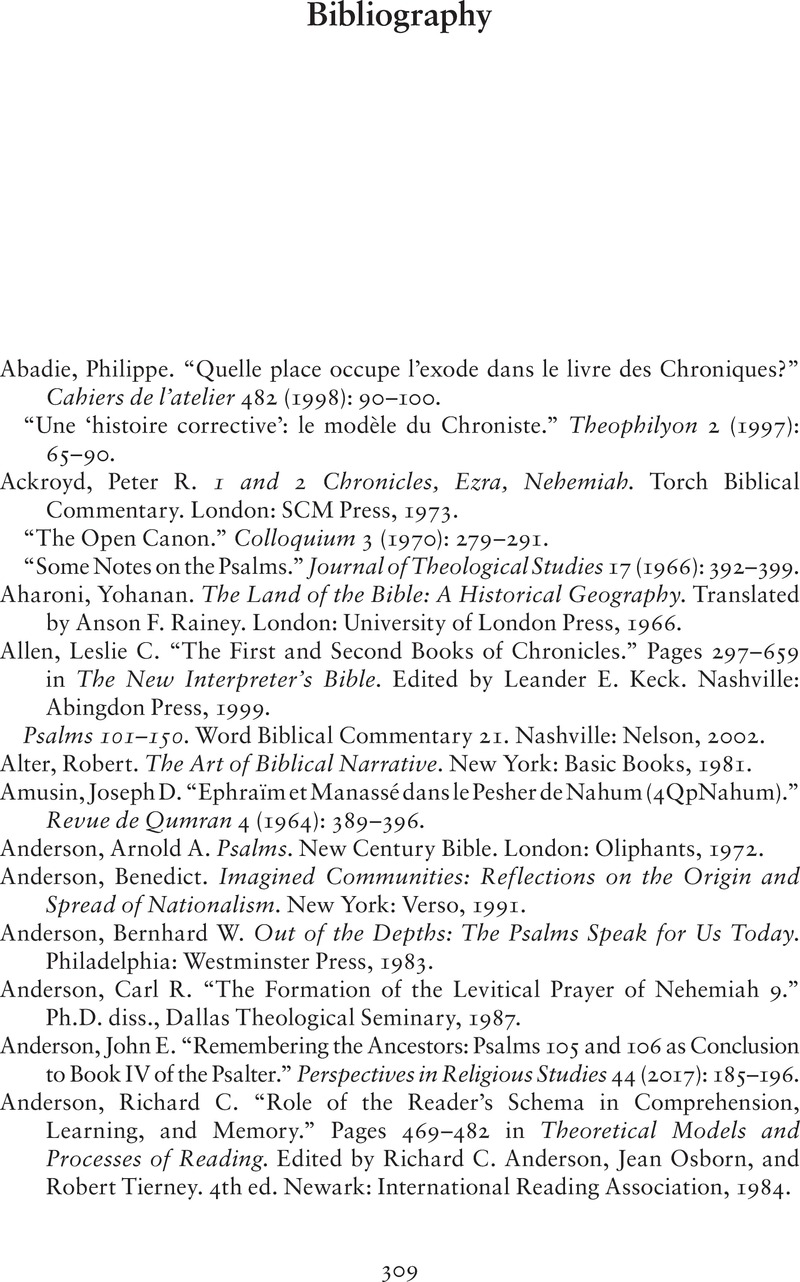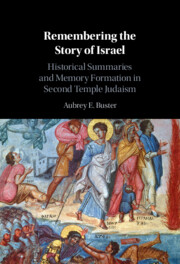Book contents
- Remembering the Story of Israel
- Remembering the Story of Israel
- Copyright page
- Contents
- Acknowledgments
- Introduction
- Part I Historical Summaries in the Hebrew Bible
- Part II Historical Summaries in the Dead Sea Scrolls
- Appendix Historical Summaries in the Hebrew Bible
- Bibliography
- Index of Names
- Index of Scripture and Ancient Sources
- Subject Index
- References
Bibliography
Published online by Cambridge University Press: 05 May 2022
- Remembering the Story of Israel
- Remembering the Story of Israel
- Copyright page
- Contents
- Acknowledgments
- Introduction
- Part I Historical Summaries in the Hebrew Bible
- Part II Historical Summaries in the Dead Sea Scrolls
- Appendix Historical Summaries in the Hebrew Bible
- Bibliography
- Index of Names
- Index of Scripture and Ancient Sources
- Subject Index
- References
Summary

- Type
- Chapter
- Information
- Remembering the Story of IsraelHistorical Summaries and Memory Formation in Second Temple Judaism, pp. 309 - 336Publisher: Cambridge University PressPrint publication year: 2022



